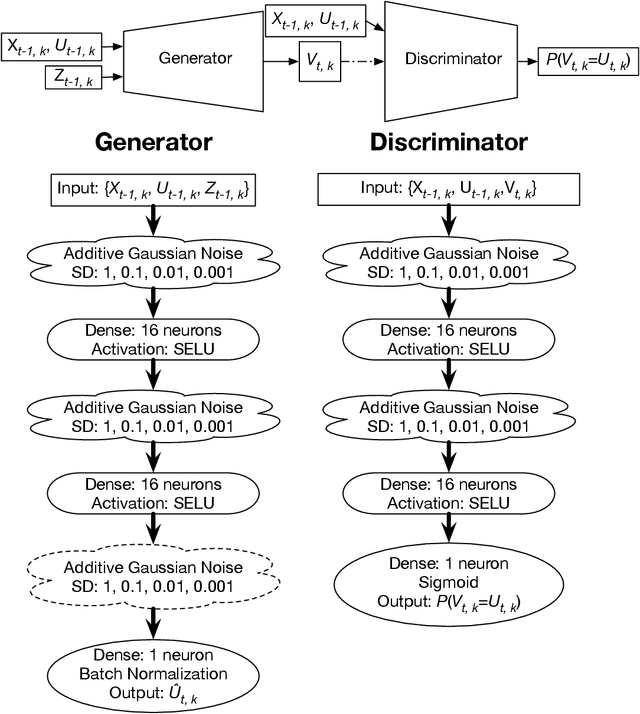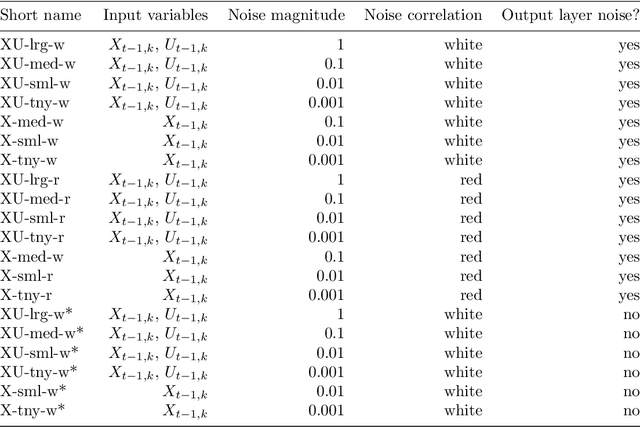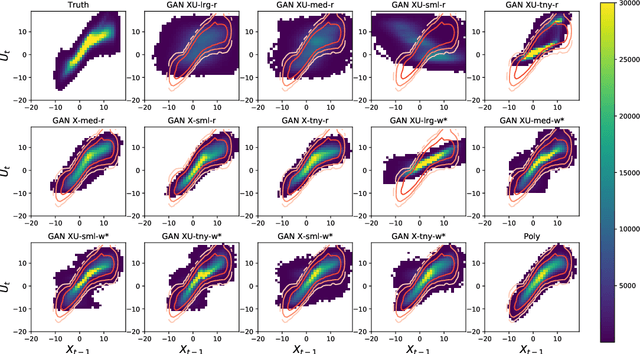Adam H. Monahan
Algorithmic Hallucinations of Near-Surface Winds: Statistical Downscaling with Generative Adversarial Networks to Convection-Permitting Scales
Feb 17, 2023Abstract:Providing small-scale information about weather and climate is challenging, especially for variables strongly controlled by processes that are unresolved by low-resolution (LR) models. This paper explores emerging machine learning methods from the fields of image super-resolution (SR) and deep learning for statistical downscaling of near-surface winds to convection-permitting scales. Specifically, Generative Adversarial Networks (GANs) are conditioned on LR inputs from a global reanalysis to generate high-resolution (HR) surface winds that emulate those simulated over North America by the Weather Research and Forecasting (WRF) model. Unlike traditional SR models, where LR inputs are idealized coarsened versions of the HR images, WRF emulation involves non-idealized LR inputs from a coarse-resolution reanalysis. In addition to matching the statistical properties of WRF simulations, GANs quickly generate HR fields with impressive realism. However, objectively assessing the realism of the SR models requires careful selection of evaluation metrics. In particular, performance measures based on spatial power spectra reveal the way that GAN configurations change spatial structures in the generated fields, where biases in spatial variability originate, and how models depend on different LR covariates. Inspired by recent computer vision research, a novel methodology that separates spatial frequencies in HR fields is used in an attempt to optimize the SR GANs further. This method, called frequency separation, resulted in deterioration in realism of the generated HR fields. However, frequency separation did show how spatial structures are influenced by the metrics used to optimize the SR models, which led to the development of a more effective partial frequency separation approach.
Machine Learning for Stochastic Parameterization: Generative Adversarial Networks in the Lorenz '96 Model
Sep 10, 2019



Abstract:Stochastic parameterizations account for uncertainty in the representation of unresolved sub-grid processes by sampling from the distribution of possible sub-grid forcings. Some existing stochastic parameterizations utilize data-driven approaches to characterize uncertainty, but these approaches require significant structural assumptions that can limit their scalability. Machine learning models, including neural networks, are able to represent a wide range of distributions and build optimized mappings between a large number of inputs and sub-grid forcings. Recent research on machine learning parameterizations has focused only on deterministic parameterizations. In this study, we develop a stochastic parameterization using the generative adversarial network (GAN) machine learning framework. The GAN stochastic parameterization is trained and evaluated on output from the Lorenz '96 model, which is a common baseline model for evaluating both parameterization and data assimilation techniques. We evaluate different ways of characterizing the input noise for the model and perform model runs with the GAN parameterization at weather and climate timescales. Some of the GAN configurations perform better than a baseline bespoke parameterization at both timescales, and the networks closely reproduce the spatio-temporal correlations and regimes of the Lorenz '96 system. We also find that in general those models which produce skillful forecasts are also associated with the best climate simulations.
 Add to Chrome
Add to Chrome Add to Firefox
Add to Firefox Add to Edge
Add to Edge